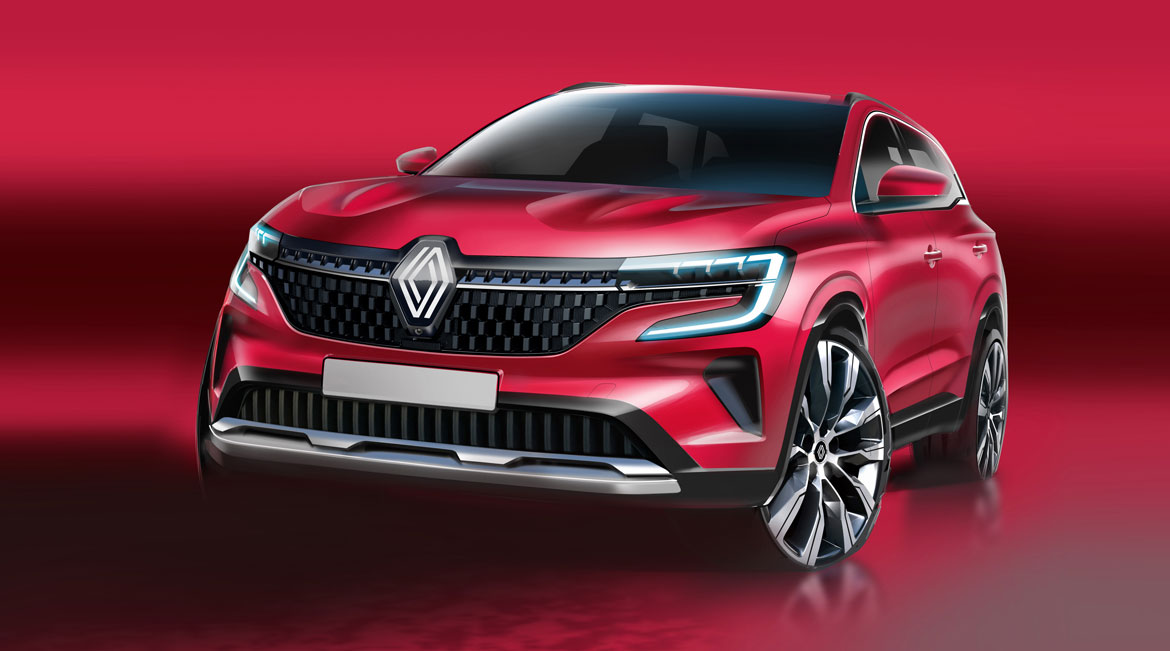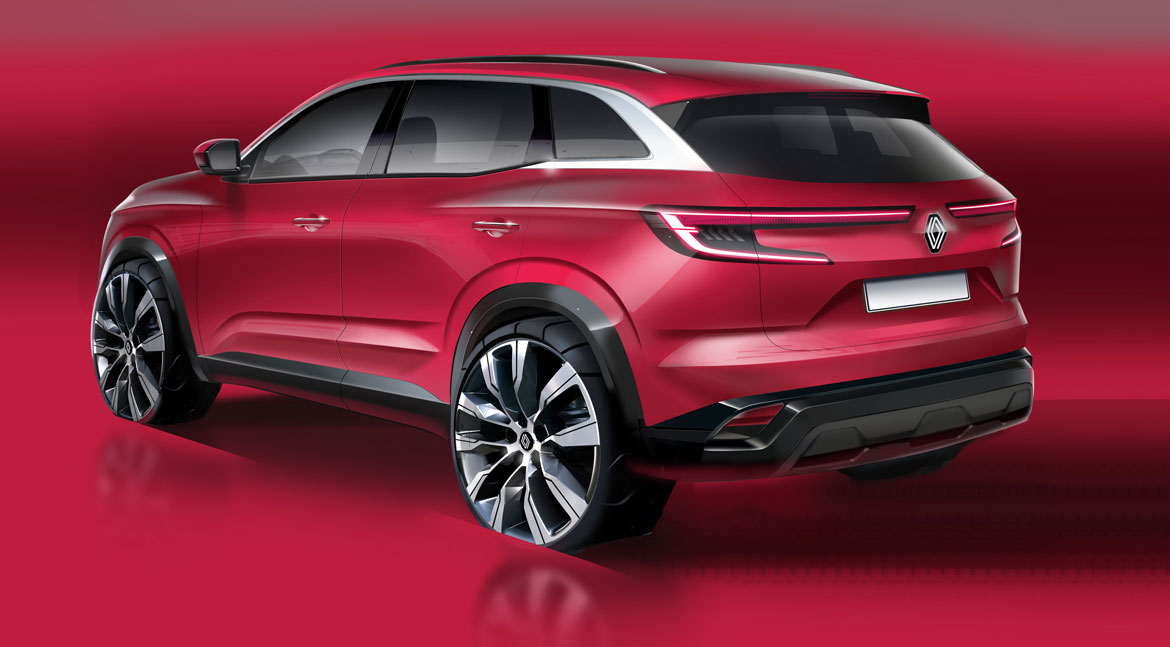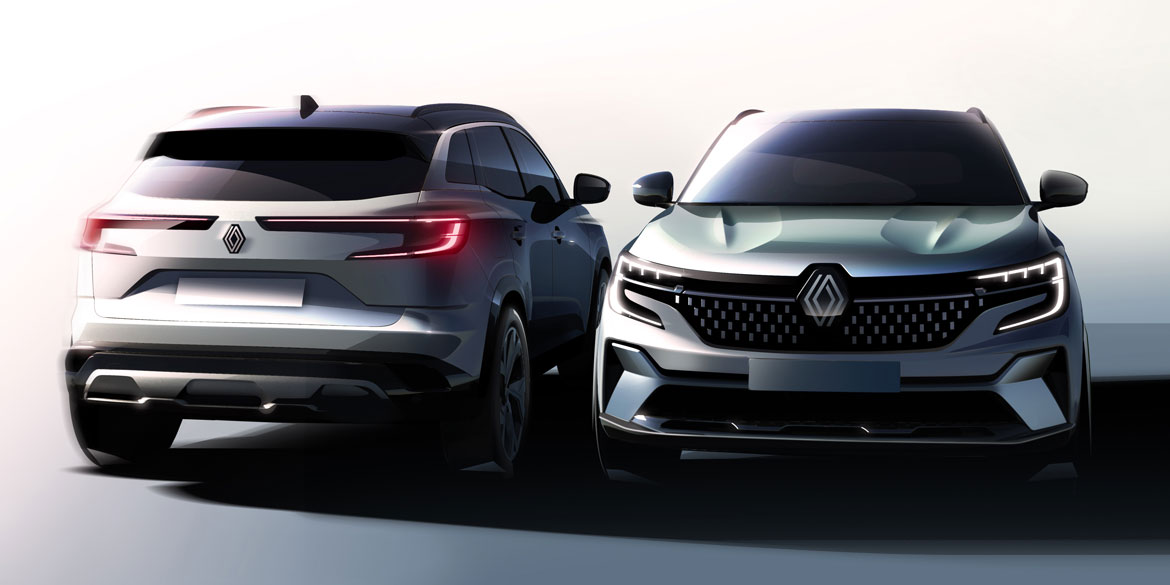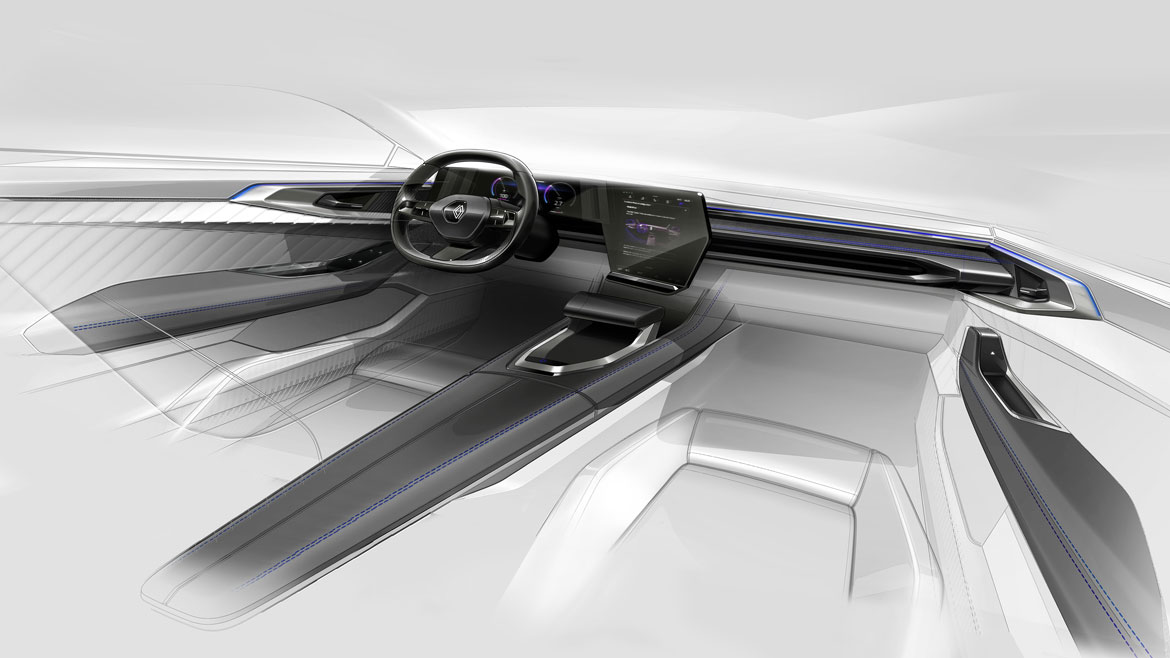A combination of sensual curves and taut lines in an ensemble sprinkled with many technical details. This is “sensual tech”, the new formal language of Renault Design that is embodied by the brand new Austral SUV, which will appear in the French manufacturer’s range in the second half of this year. To find out more about what it’s about and how it has been interpreted in the genesis of the Austral, we went to Paris, last March, to preview the car and meet Agneta Dahlgren, Renault’s Project Director for the C/D segment platform.
A new architecture
For Austral, the platform in question is the third-generation CMF-CD, jointly developed as part of the Renault-Nissan-Mitsubishi Alliance. «We started working on Austral quite early, about five years ago. When you start a project on a very new platform, you coordinate with the other brands to agree on the proportions, geometries and dimensions from the outset», explains Dahlgren, who has no shortage of engineering skills, having completed a master’s degree in industrial design at the University of Technology in Compiègne and a master’s degree in industrial engineering in her native Sweden.
OpenR, a digital world
«Of course – she continues – we also worked immediately on the design strategies and the message we wanted to convey, as well as the innovations to be introduced, and there were many, both for the Austral and for the new Mégane (the latter is based on the CMF-EV platform for electric cars), such as the Open-R display, which is a novelty for the two cars. In the design department, we did a lot to make sure the screen was as thin as possible, but still large. We have two: a horizontal 12” in front of the driver and another 12” in the middle. We wanted to give the impression of a floating element, with no visor above the instrument panel, to set it as a highlight inside the cabin, freeing up space on board».
Athletics sides
Since it is an SUV and a family car, the Austral had to convey a sense of ruggedness and safety, and this is where the sensual tech language comes into play: the sculpted bonnet, the athletic muscle of the sides, the beltline that rises at the rear to express protection, are all strong features into which refined elements are inserted, such as the C-shaped LED headlights with their diamond shaped weave, or the rear light clusters, also LED, with holographic micro-optic technology. There is also the upper part of the large chequered grille with the Ice Black finish, featuring a horizontal chrome line that joins the headlights.
The “esprit Alpine£ version
«But we also wanted to emphasise the car’s dynamism and sportiness, as shown by the many sloping lines in the exterior and interior design. That’s why we have the esprit Alpine version of the Austral, which is a first for a Renault car», continues Dahlgren. This new “top of the range” livery draws on the DNA of the Renault group’s sporty brand and offers – in addition to the blue A of the Alpine logo on the side – a brand new Satin Schist Grey paint finish «which expresses power and dynamism, it isn’t shiny nor is it matte, because it gives greater luminosity to the body and is comparatively much less delicate than pure “matte” when it comes to scratches. I really like the contrast with the black roof».
A signal for change
But it is perhaps more within that the Austral is embellished by the Alpine esprit, with Alcantara upholstery with blue double stitching, embroidered logos on the headrests, blue seat belts and Alpine lettering on the heel guard. «It’s a sign of our nouvelle vague, it’s very French, and it shows change and modernity. We are working hard to always adapt the design to the highest quality. Things are evolving very quickly at Renault today», concludes Agneta Dahlgren, who can certainly speak with reason given that she has worked for the French company for over twenty years. The Renaulution, after all, has only just begun.
(Full article in A&D n. 254)
















